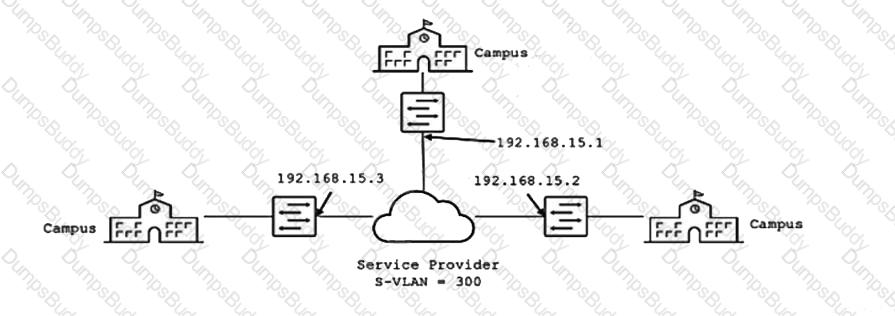Your network is multihomed to two ISPs. The BGP sessions are established; however, the ISP peers are not receiving any routes.
Which two statements are correct about troubleshooting your configuration? (Choose two.)
In OSPF, how does a router ensure that LSAs advertised to a neighboring router are received?
Your enterprise network is running BGP VPNs to support multitenancy. Some of the devices with which you peer BGP do not support the VPN NLRI. You must ensure that you do not send BGP VPN routes to the remote peer.
Which two configuration steps will satisfy this requirement? (Choose two.)
You are using 802.1X authentication in your network to secure all ports. You have a printer that does not support 802.1X and you must ensure that traffic is allowed to and from this printer without authentication.
In this scenario, what will satisfy the requirement?
Which two multicast listener registration protocols are supported in the Junos operating system? (Choose two.)
You are deploying IP phones in your enterprise networks. When plugged in, the IP phones must be automatically provided with the correct VLAN ID needed for sending voice traffic to the EX Series switches.
In this scenario, which two solutions are required to accomplish this task? (Choose two.)
You are asked to enforce user authentication using a captive portal before users access the corporate network.
Which statement is correct in this scenario?
Your enterprise network uses routing instances to support multitenancy. Your Junos devices use BGP to peer to multiple BGP devices. You must ensure that load balancing is achieved within the routing instance.
Which two statements would accomplish this task? (Choose two.)
You are deploying new Juniper EX Series switches in a network that currently is using Cisco’s Per-VLAN spanning tree plus (PVST+) and you must provide compatibility with this environment.
Which spanning tree protocol do you deploy in this scenario?
You want to provide Layer 2 connectivity between campus sites using Ethernet switches through a metro Ethernet service provider who is using Q-in-Q tagging on their network.
Referring to the exhibit, what are two design considerations in this environment? (Choose two.)

You are asked to configure an 802.1X solution that supports dynamic VLAN assignment.
In this scenario, which two modes support using vendor-specific attributes (VSAs)? (Choose two.)
BGP multipath or multihop are not configured in your network.
In this scenario, what is the correct sequence for BGP active route selection?
You are deploying an 802.1X solution and must determine what would happen if clients are unable to re-authenticate to the RADIUS server.
In this scenario, which configuration would provide access to the network if the supplicant is already authenticated?